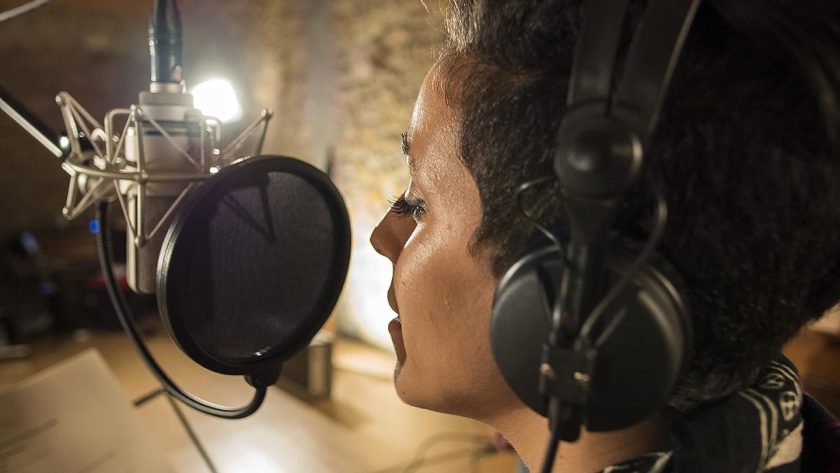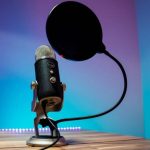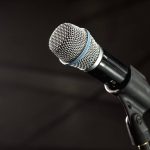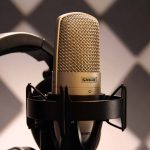In this review, we take a look at the best Neumann microphones for vocals that have become the industry-standard for audio recording over the years. Some of these microphones including the legendary Neumann U 87 have become the standard in recording studios and are able to capture your voice with all its subtleties and nuances with a warm sound signature. If you are planning to a get a high-end condenser mic for recording vocals at home or in your personal recording studio, these Neumann microphones come highly recommended.
Having said that, a word of caution – these Neumann condenser microphones are designed to work best in a professional recording studio setting with adequate acoustic treatment. These are some of the most sensitive microphones in the industry, and they can pick up very subtle sounds such as the sound of the air con or computer if used in a home recording studio setup. With the exception of the Neumann TLM-193 (a beginner friendly mic), I do not recommend Neumann mics for beginners as they are more suited for professional recording studios.
If you are recording in a noisy environment with a lot of background sounds (such as the sounds of cars passing by or people in your house), we would recommend a dynamic microphone such as the Shure SM 58 LC instead. Only go for a Neuman condenser mic if you are sure that your recording studio has proper acoustic treatment that provides a quiet recording space.
1. Neumann TLM 103 Cardioid Condenser Mic
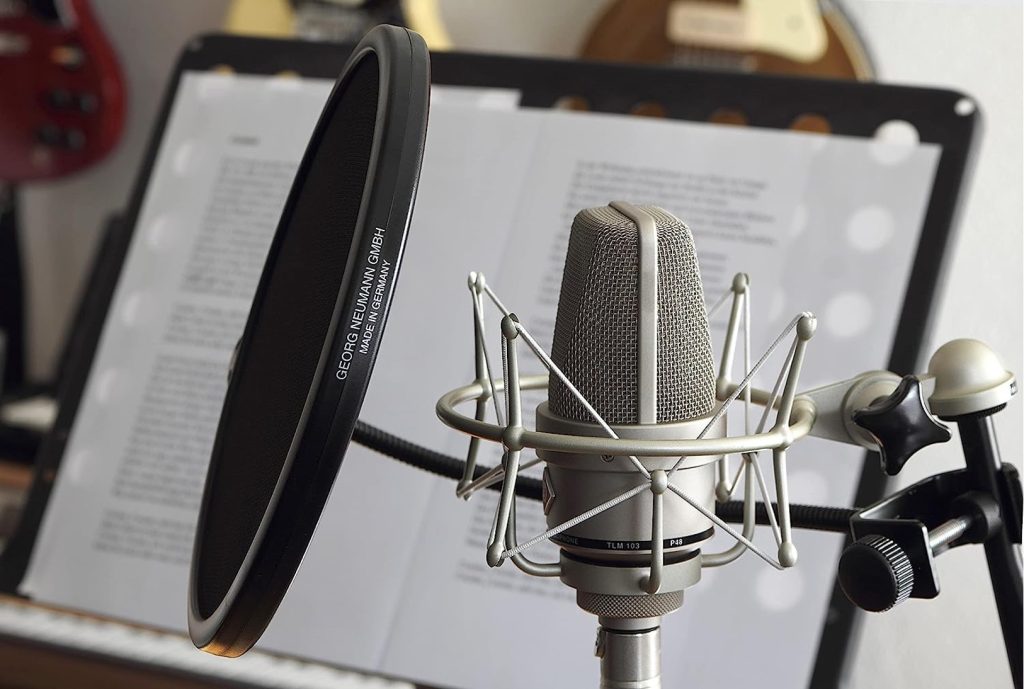
Considered the “industry-standard” for recording vocals…
The Neumann TLM 103 is a large diaphragm cardioid microphone known for its pressure gradient transducer with a one-diaphragm capsule, which is derived from the classic K67/87 capsule of the legendary Neumann U 87, although with a slightly more modern voicing boosting frequencies above 5 kHz. It operates within a frequency range of 20Hz–20kHz, and has a sensitivity of 23mV/Pa at 1kHz into 1 kohm, with a rated impedance of 50 ohms and a rated load impedance of 1k ohms. The TLM 103 comes with transformerless circuitry which reduces electromagnetic interference and provides a high level of purity when capturing vocals.
I really like the TLM 103’s transformerless design which results in a very clean and precise sound especially when singing and capturing vocals. Vocals sound particularly nuanced and engaging on this microphone and it also has an impressive max SPL of 138dB and a low self-noise level of 7dB(A), which makes it exceptionally clear. Due to its high sensitivity, I only recommend using the Neumann TLM 103 in environments that are acoustically treated or a in a professional recording studio setting.
When compared to other microphones such as the TLM 102, the TLM 103 has a fuller, richer bass response, crisper, airier high frequencies, and a louder output signal. This makes it great for capturing higher-frequency ranges from vocals or from acoustic guitars. The TLM 103 also has lower self-noise compared to the TLM 102, which makes a significant difference in reducing unwanted noise in recordings.
If you are looking for a microphone to capture vocals in a professional setting, the Neumann TLM 103 comes highly recommended. It especially shines with lead instruments like vocals and acoustic guitar, requiring little post-processing on your DAW, and its buttery mid-range presence makes it a very unique microphone with its own dynamic sound signature.
The Neumann TLM 103 is considered the industry-standard microphone for recording vocals and is a great investment if you want a mic that can capture the essence of your vocals with warmth and good engagement.
2. Neumann TLM 102 Condenser Mic
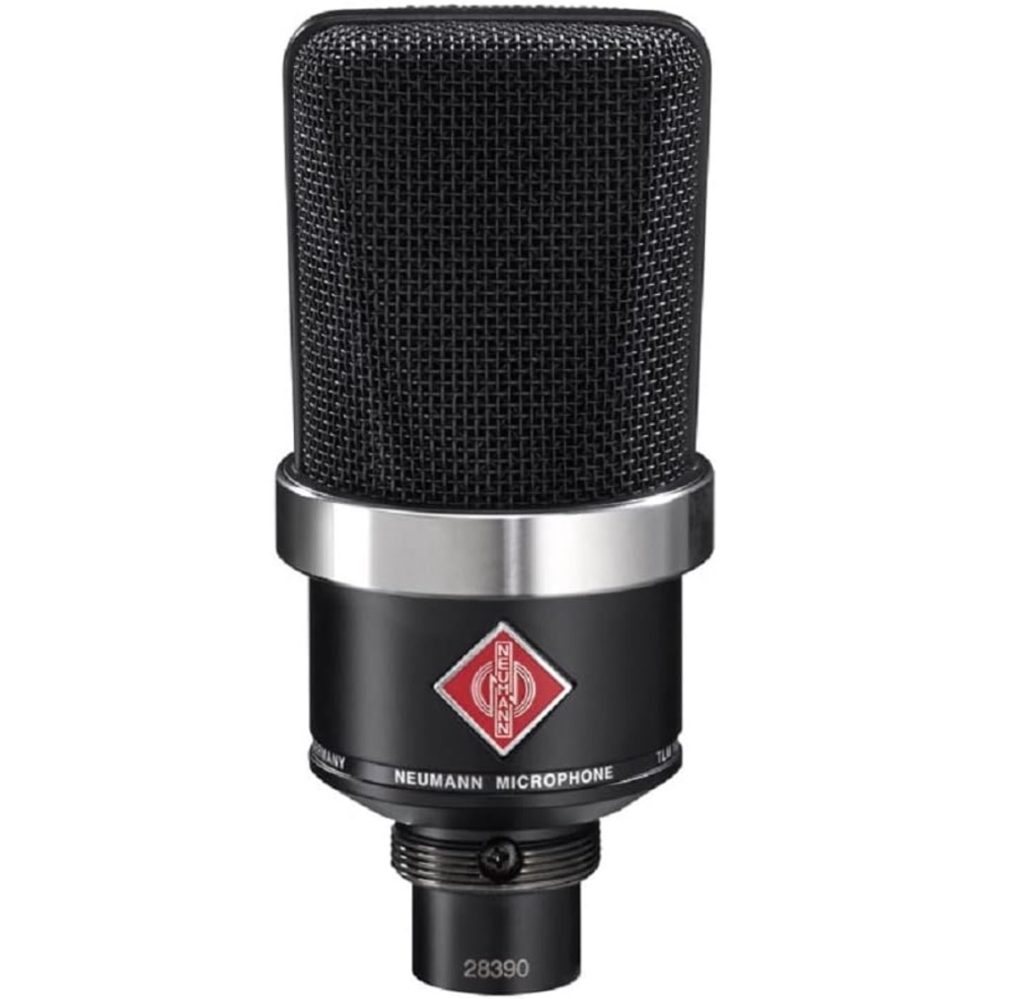
One of the best Neumann condenser mics for vocals…
The Neumann TLM 102 is a large-diaphragm condenser microphone featuring a cardioid directional polar pattern and is designed for home recording studios and live performance scenarios. This is a compact microphone which has a very high maximum sound pressure level of 144 dB and a wide frequency range 20Hz to 20kHz, with a slight presence boost above 6kHz, which helps vocals to shine and sound much more engaging in a DAW recording.
The TLM 102 features a transformerless design that makes the sound feel cleaner and lower self-noise, although its self-noise level of 12 dB A could be a detractor in a professional recording setting. Its high maximum SPL makes it versatile for handling louder sound sources like drums or amplified instruments or louder vocals. The TLM 102 microphone significantly smaller and lighter compared to other Neumann microphones like the U87 and is easy to setup in a home recording studio setting.
When compared with the TLM 103 microphone, we felt that the TLM 103 provides deeper bass and a richer highs. The TLM 103 also has a louder output signal and lower self-noise, which could be beneficial in certain recording scenarios. That being said, the TLM 102 has a higher 6dB maximum SPL, making it a more suitable choice for recording louder vocals or instruments that would normally fair better with a dynamic mic.
I found that vocals on the TLM 103 microphone sounded pretty good and bright on the TLM 103 despite its higher SPL. Although it does capture less bass due to its higher self-noise level, it’s a less sensitive mic that can be a used in a home recording studio setup with adequate acoustic treatment.
If you are looking for a microphone for recording vocals in a home studio setting, the Neumann TLM 102 is a solid choice, particularly due to its slight presence boost above 6kHz which adds a level of clarity to vocal recordings. It has a very simple design and is an excellent investment for any home recording studio setup.
3. Neumann TLM 107 Large-Diaphram Condenser Mic
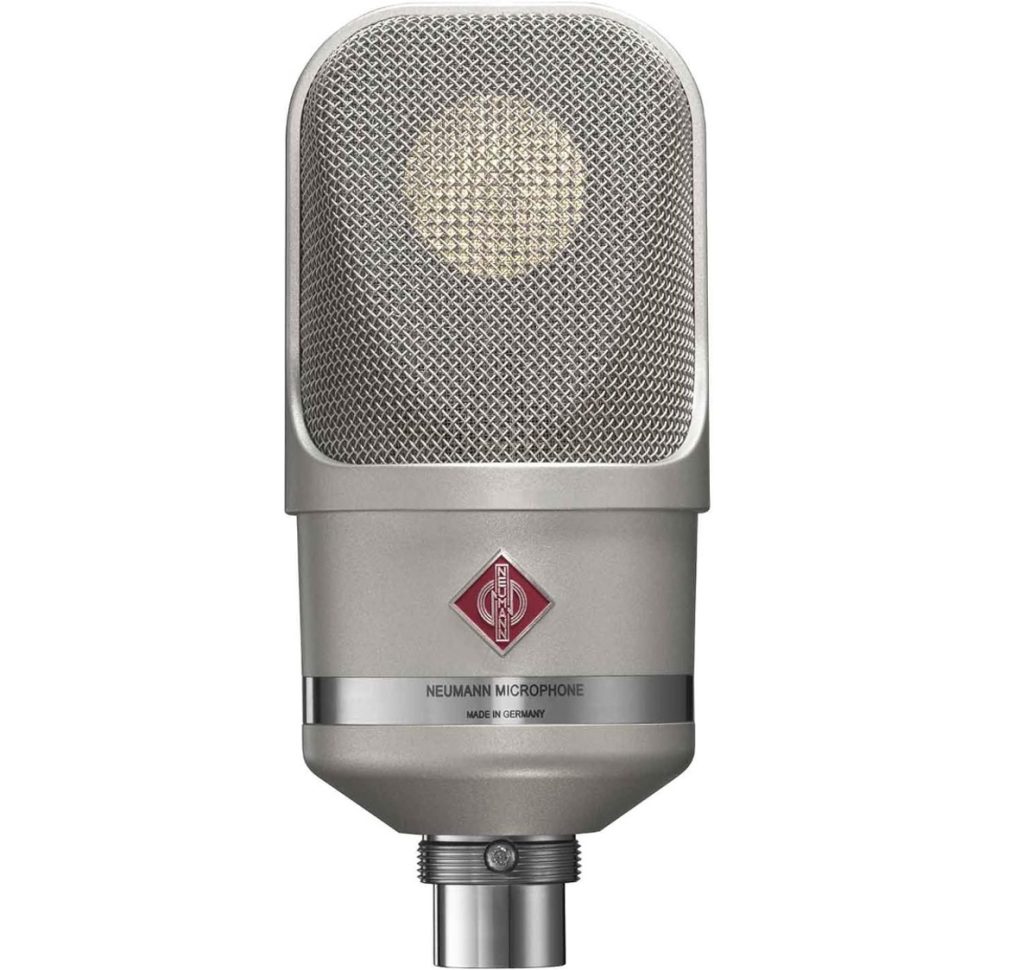
One of the most versatile mics from Neumann…
The Neumann TLM 107 is a large-diaphragm multipattern condenser microphone that comes with five selectable polar patterns: cardioid, wide cardioid, omni, hypercardioid, and figure-8. This microphone operates within a frequency response range of 20Hz-20kHz and can handle a maximum Sound Pressure Level (SPL) of 141dB with an impressive low self-noise level of 10 dBA, making it a relatively quiet microphone suitable for studio use. The TLM 107 is 48V phantom powered, and requires a decent mic preamp or audio interface to drive it.
What I liked about the TLM 107 is that vocals sound transparent and natural with outstanding transient response. The TLM 107 delivers balanced sound across all five polar pattern settings and vocals sound engaging and very lifelike – they are capable of capturing very subtle nuances in the vocals and even your breathing.
The TLM 107 also features a navigation switch with an LED illuminated display for polar pattern, PAD, and low cut selections which is a useful feature if you need to switch the mic between recording vocals and instruments or louder sounds in general.
When we compared the TLM 107 to other microphones such as the TLM 103 and TLM 102, the TLM 107 has the added advantage of having 5 adjustable polar patterns which makes it one of the most versatile mics you can get from Neumann. In comparison to the AKG’s C414, the TLM 107 sounds much cleaner and brighter and can be adjusted to record louder vocals or drums.
If you are looking for a microphone with a high degree of flexibility and a natural, transparent sound especially for recording vocals, the Neumann TLM 107 is definitely a great choice. Its adjustable polar pattern makes it great for recording virtually anything including vocals, drums and acoustic instruments where it can capture the highs and mids with great clarity. It’s a great investment for any home recording studio setup and I highly recommend them.
4. Neumann KMS 105 MT Condenser Mic
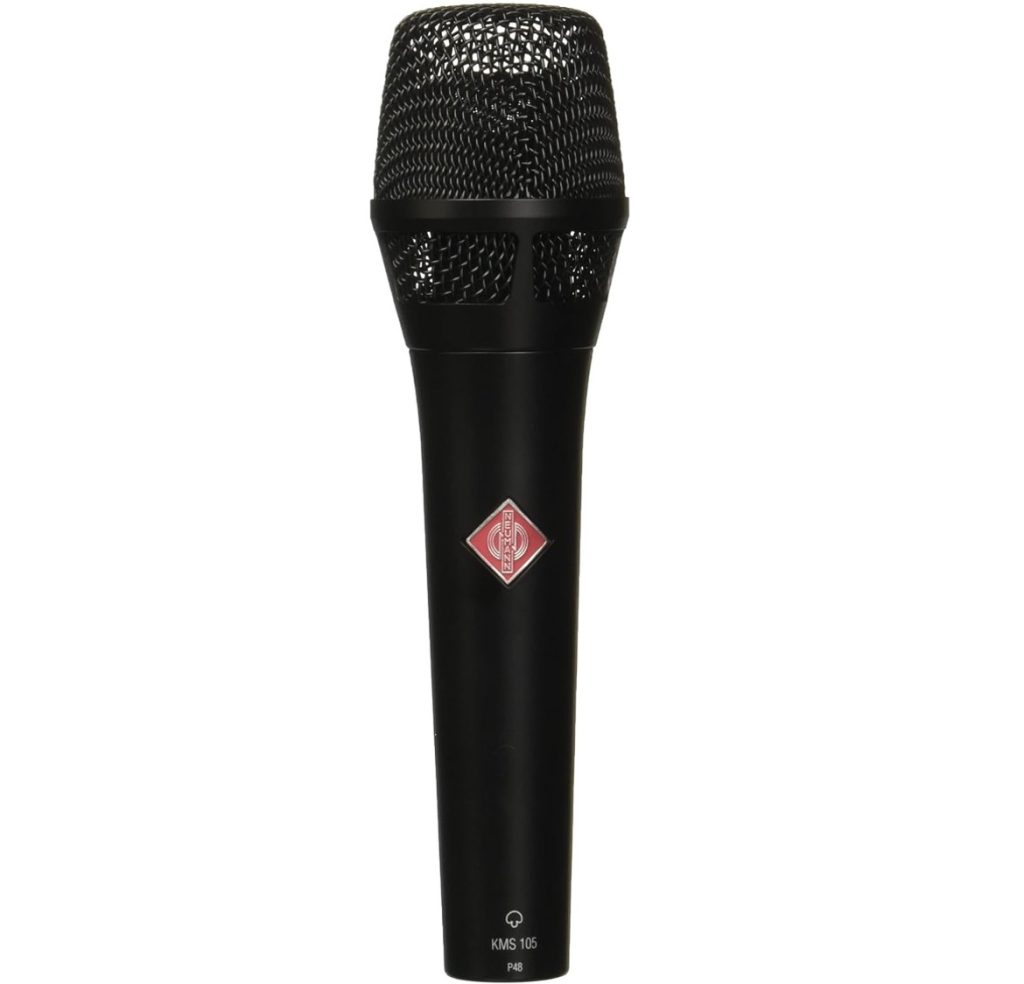
The best Neumann mic for live on-stage vocals…
The Neumann KMS 105 MT is a condenser mic designed specifically for on-stage live performances. This microphone has a supercardioid polar pattern that makes it ideal for on-stage recordings and has some of the most natural vocal pickup we have heard. Like the other Neumann microphones, the KMS 105 MT has a frequency range of 20 Hz to 20 kHz and captures the higher frequency ranges more effectively to bring out the natural sounds in your vocals.
I really like the level of “openness” that the Neumann KMS 105 MT delivers – they have a transparent sound signature that makes your vocals sound lifelike and very engaging on stage. Compared with other Neumann mics such as the TLM 103s, the KMS 105 MT has a more linear frequency response which allows your voice to sound true and natural; it can bring out the subtle nuances in your vocals and highlight the good (and bad) in your singing. Vocals feel more transparent and “airy” with a presence boost in the midrange which makes this mic muc better than a traditional dynamic mic such as the Shure SM 58 LCs.
One thing we liked about the KMS 105 MT is its supercardioid polar pattern and rear-rejection of over 15dB which reduces any feedback from surrounding ambient noises on stage. It does have some off-axis pickup due to its sensitivity but is otherwise a really good microphone for live performances.
If you are looking for a microphone delivers detailed and transparent vocals, the Neumann KMS 105 MT comes highly recommended. We really liked how vocals sound on this mic while recording on-stage, and this mic is also relatively light and durable compared with other Neumann mics.
5. Neumann KMS 104 Plus Cardioid Condenser Microphone
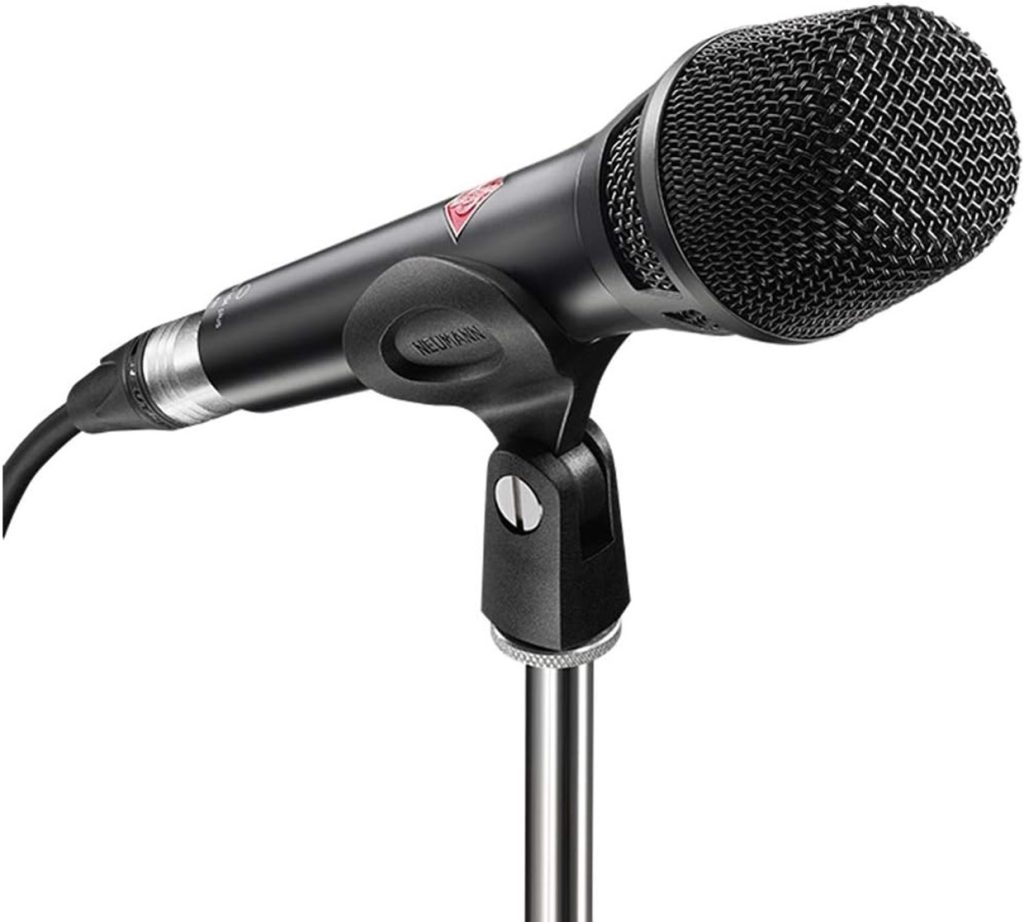
If you are looking for an on-stage mic with extended bass response…
The Neumann KMS 104 Plus is essentially a studio grade microphone designed for vocalists with a cardioid pickup pattern. Compared with its predecessor the KMS 104, the KMS 104 plus provides extended bass response and can handle loud vocals (with better SPL capability and high feedback resistance). The microphone operates on a pressure gradient transducer acoustical principle and features a cardioid directional pattern to minimize off-axis sound pickup while singing on stage. It has a frequency range extending from 20 Hz to 20 kHz and provides really good clarity and detail.
I liked the microphone’s high sound pressure level (SPL) handling capacity of up to 150 dB, which means that you can literally scream into the mic without any distortion or clipping. The microphone handles loud vocals really well, providing crystal clear clarity and an extended bass response for male vocals. Additionally, the microphone has really good plosive protection which reduces any on-stage plosive pickup. This is a microphone that you would want to use for close miking as it compensates for the proximity effect and provides good bass response.
Compared with other dynamic microphones, the KMS 104 has a much smoother frequency response and an airy top-end which makes vocals sound more transparent and lifelike. It also has very good transient response which produces a more immediate and emotional vocal sound without the need to boost the EQ settings.
Overall, the Neumann KMS 104 Plus is a very good handheld vocal microphone but can also be used for other on-stage applications due to its high SPL handling and dynamic range. You can use it to record bass-heavy instruments such as percussion, saxophone, trumpet and acoustic guitar. It’s also a good microphone to get for home recording studios due to its off-axis rejection and lesser sensitivity, which means that you pick up less surrounding background noises.
6. Neumann U 87 Ai Condenser Microphone
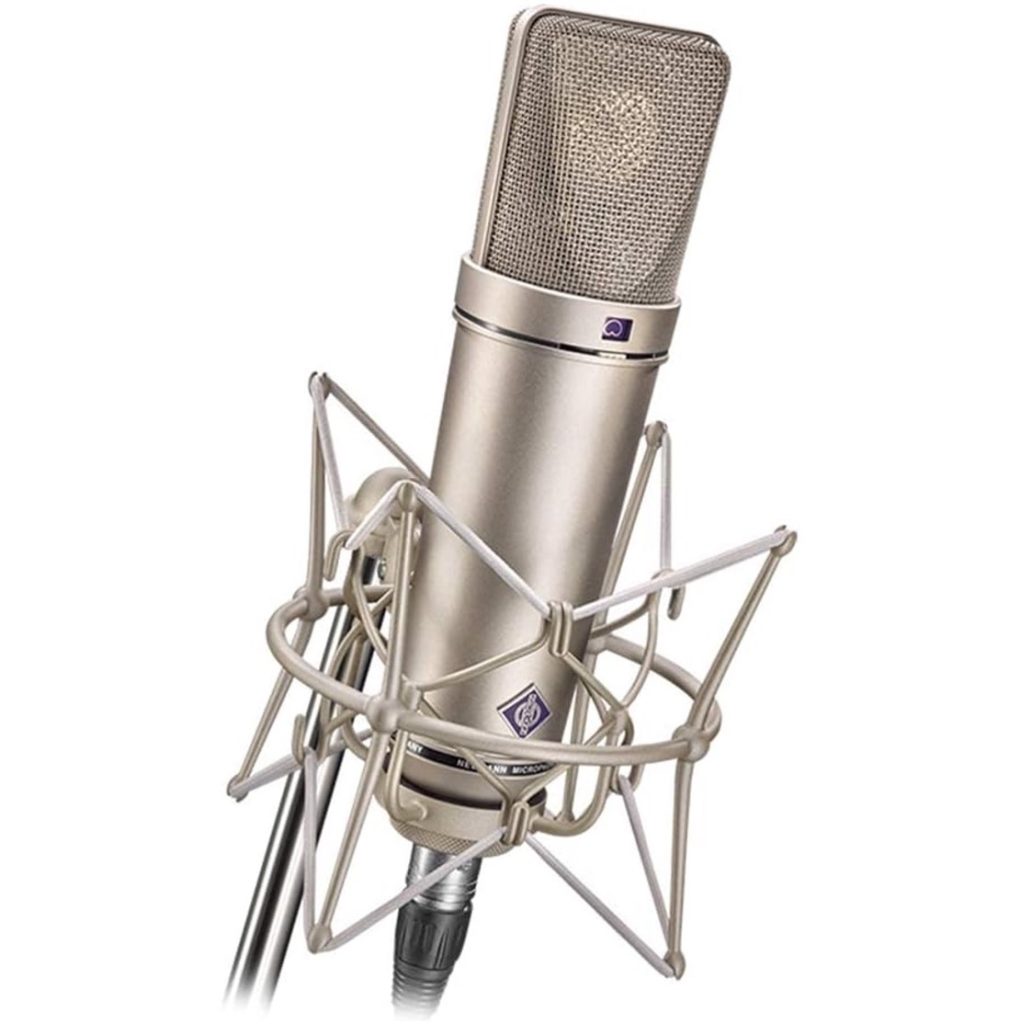
Long considered the best Neumann microphone for professional recording…
The Neumann U 87 Ai is a large-diaphragm FET (Field Effect Transistor) condenser microphone, and is considered an industry-standard for professional recording. The microphone employs a pressure-gradient transducer with a double-membrane capsule for crystal clear pickup, and provides three directional polar patterns: omni, cardioid, and figure-8 which are selectable depending on your recording needs. The U 87 Ai features a switchable low-frequency roll-off and a switchable 10dB pre-attenuation pad. It has a rated impedance of 200 Ohms and a rated load impedance of 1 KOhms. The frequency range of the microphone is 20Hz to 20kHz which is typical of what you would expect from a Neumann mic.
The U 87 Ai has some of the clearest sound performance we have heard in any professional microphone. This microphone will pick up all the details in your vocals and capture subtle nuances in your voice, including subtle pauses and breathing sounds. The microphone’s ability to handle a maximum sound pressure level (SPL) of 127 dB, its signal-to-noise (S/N) ratio of 82 dB, and a sensitivity of 28 mV/Pa, make them ideally suited for professional recording with good extended bass response.
When compared to other microphones like the Neumann TLM103, the U 87 Ai sounds more refined and provides really engaging vocals – it is a microphone that you would get for high-end recording that can really bring out the subtle details in your voice. I also like that the U 78 Ai has 3 switchable polar patterns, which make it pretty versatile especially if you need more off-axis sound rejection from nearby instruments or want to reduce the proximity effect of your voice.
If you are looking for a high-end professional grade Neumann microphone, the Neumann U 87 Ai is definitely the one you should get for its transparent and natural vocal sound reproduction. This mic is more suited for professional recording studio setups than home studios due to its sensitive pickup – if you want to use this mic at home, you should ideally have a studio room with adequate acoustic treatment.
7. Neumann TLM-193 Cardioid Condenser Microphone
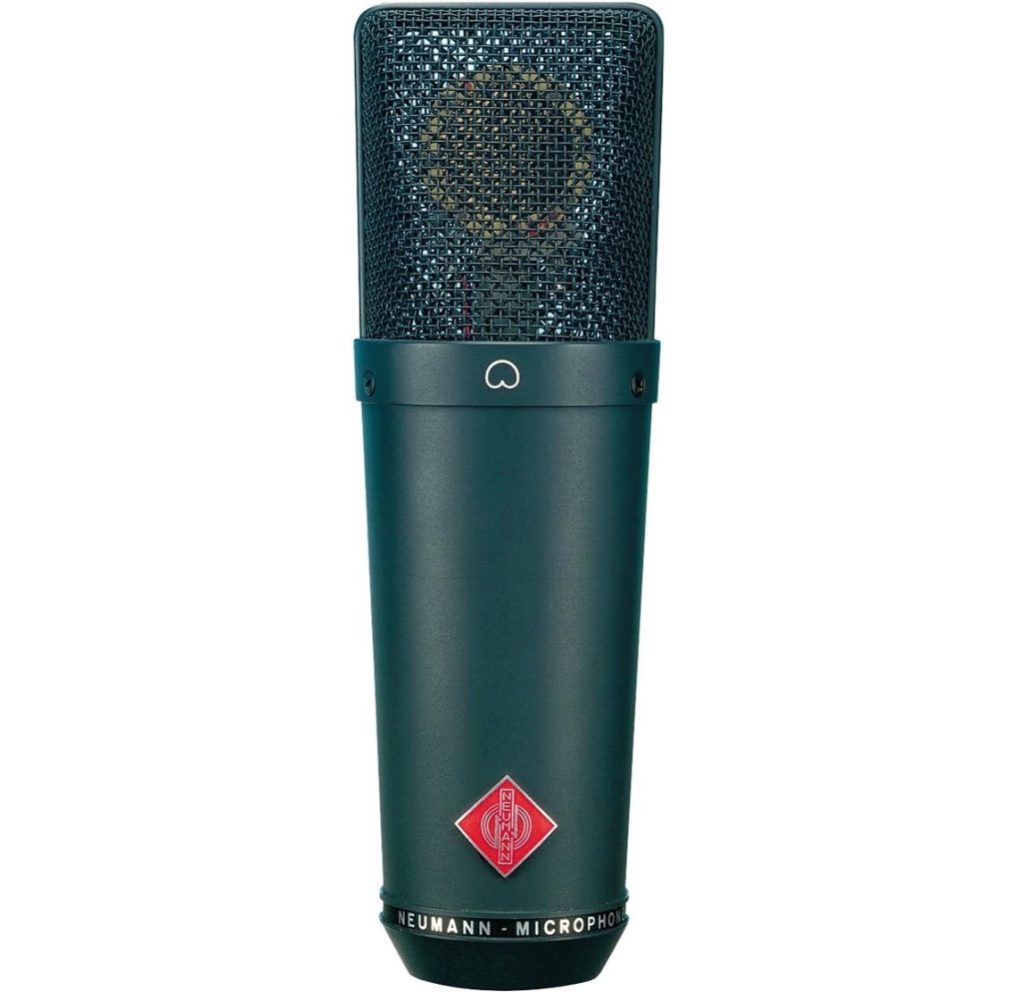
An easy “plug-and-play” microphone for vocals…
The Neumann TLM-193 Cardioid Condenser Microphone is one of the easiest microphones to use and is essentially a plug and play microphone. This microphone features a cardioid pattern without off-axis coloration, and has very low self-noise and distortion. The microphone has an even frequency response with really good transient behaviour, and is ideal for podcasting or capturing vocals. One thing I like about this microphone is that it is very easy to use – all you have to do is aim the microphone at the audio source (in which case is your mouth) and press record to record vocals.
I found the TLM-193 mics to be very good for capturing vocals or podcasting where it will essentially capture the authentic voice character without any added coloration. They are capable of capturing the subtle nuances and details in your voice with great clarity and accuracy; while they don’t sound as engaging as the TM 103s, they are certainly great for capturing your vocals as they are.
I like the fact that the TLM-193 has a wide dynamic range of 130 dB which allows it to capture soft and very loud sounds without any degradation. The self-noise of the microphone is only 10 dB-A, which is significantly below the ambient noise in a quiet recording studio, making it a good choice for clean, noise-free recordings. On the downside, unlike some other models like the U87, it doesn’t feature a pad or a low cut filter, which might limit its versatility in handling different sound sources from instruments.
When we compared the Neumann TLM-193 with other microphones such as the Neumann U87, it was evident that the TLM-193 is a more affordable option with a fixed cardioid pattern, whereas the U87 offers multiple polar patterns. The TLM-193 is more of a straightforward, no-frills microphone with a focus on delivering a linear and balanced sound, making it a suitable choice for those who don’t require the flexibility of changing polar patterns.
Overall, the Neumann TLM-193 is a very solid microphone that is designed for home recording studios. It is very easy to setup and can be used by novices straight out of the box with no additional setup required – the mic also has a cardioid pattern without off-axis coloration, and can handle louder vocals due to its high SPL capability and low self-noise.
8. Neumann KM 184 Small Diaphragm Condenser Mic

The best mic for recording instruments and backing vocals…
The Neumann KM 184 is one of the best small diaphragm condenser mics designed for instrument recording. The microphone has a cardioid pickup pattern without any off-axis coloration and can capture the sound of instruments exactly as they are. It has very low self-noise and a high SPL capability, allowing this mic to capture louder instruments such as drums. Compared to the other Neumann mics on this list, the KM 184 has a very transparent and uncolored sound signature.
I like the fact that the Neumann KM 184 has a high SPL handling capability at a maximum of 138 dB, and a very low self-noise level of only 13 dB-A, which is particularly beneficial when capturing subtle nuances of acoustic instruments or quieter sound sources. This mic has a cardioid pickup pattern with decent rearward (180 degree) sound rejection for precise recording or stereo imaging (this is relevant if you are recording acoustic guitar). Furthermore, its low impedance output stage allows it to drive long cable runs of up to 300 meters without transmission losses which is great for on-stage live recordings.
Compared with other microphones, the KM 184 is particularly suited classical music recording and can capture the natural tone of any instrument including grand pianos and guitar. If you have recorded in a professional setting, you might have seen this mic being used in a professional recording studio for piano, percussion and drums. These mics are also great for recording backing vocals due to its linear sound pickup which complements the main vocalist.
Overall, the Neumann KM 184 is an excellent instrument microphone due to its transparent sound reproduction and ability to capture detailed sound without coloration for backing vocals. Its linear frequency response and cardioid polar pattern also makes it great for recording drums, percussion or piano instruments, and it can also handle louder instruments due to its high SPL capability.
Frequently Asked Questions
Q: What are the best Neumann mics for vocals?
A: The best Neumann mics for vocals include the Neumann TLM 103 and the Neumann U 87 Ai.
Q: Are Neumann mics condenser mics or dynamic mics?
A: Neumann mics are primarily known for their condenser microphones, which are widely used in the recording industry.
Q: What is the difference between condenser and dynamic microphones?
A: Condenser microphones are generally more sensitive and provide a clearer and more detailed sound quality, while dynamic microphones are more rugged and can handle high sound pressure levels.
Q: Why are Neumann mics considered the best for vocals?
A: Neumann mics are known for their exceptional sound quality and the ability to capture the nuances of vocal performances. The studio sound they provide is often described as clear, rich, and professional.
Q: What is the right Neumann microphone for vocals?
A: The right Neumann microphone for vocals depends on personal preferences and the specific recording situation. However, popular choices among vocalists include the Neumann TLM 103, the Neumann U 87 Ai, and the Neumann TLM 107.
Q: How does a Neumann microphone compare to other microphone brands?
A: Neumann microphones are highly regarded in the recording industry and are often considered the top choice for engineers and artists. The brand is known for its exceptional build quality and the ability to deliver a studio-quality sound.
Q: Are Neumann mics suitable for recording other instruments besides vocals?
A: Yes, Neumann mics are highly versatile and can be used for recording various instruments, including guitar amplifiers and other acoustic instruments.
Q: Are Neumann mics worth getting?
A: While Neumann mics are relatively costly compared with other condenser mics, they are considered an investment for professionals who prioritize high-quality sound and durability. Many recording engineers believe that the sound quality and reliability of Neumann microphones are hard to beat.
Q: What makes Neumann mics stand out from other microphone manufacturers?
A: Neumann is known for its rich history in the recording industry and the company’s commitment to producing top-end microphones. Their attention to detail, craftsmanship, and dedication to delivering the best sound possible make Neumann a top choice for many professionals.
Q: Is there a specific Neumann mic that is commonly used for handheld vocal performances in live settings?
A: The Neumann KMS series, particularly the Neumann KMS 105 (see above), is often the mic of choice for live vocal performances. It provides a clear and natural sound, even in challenging live environments.
